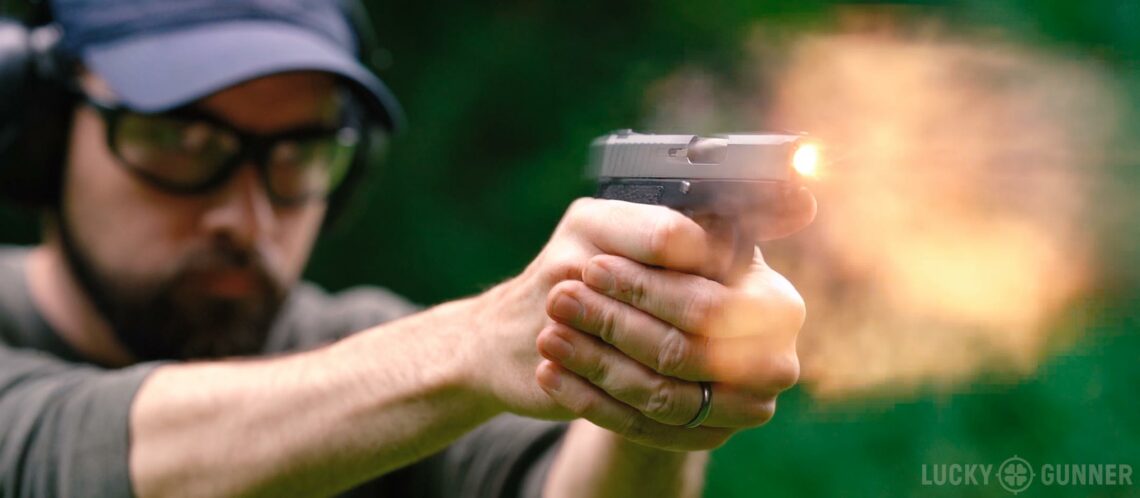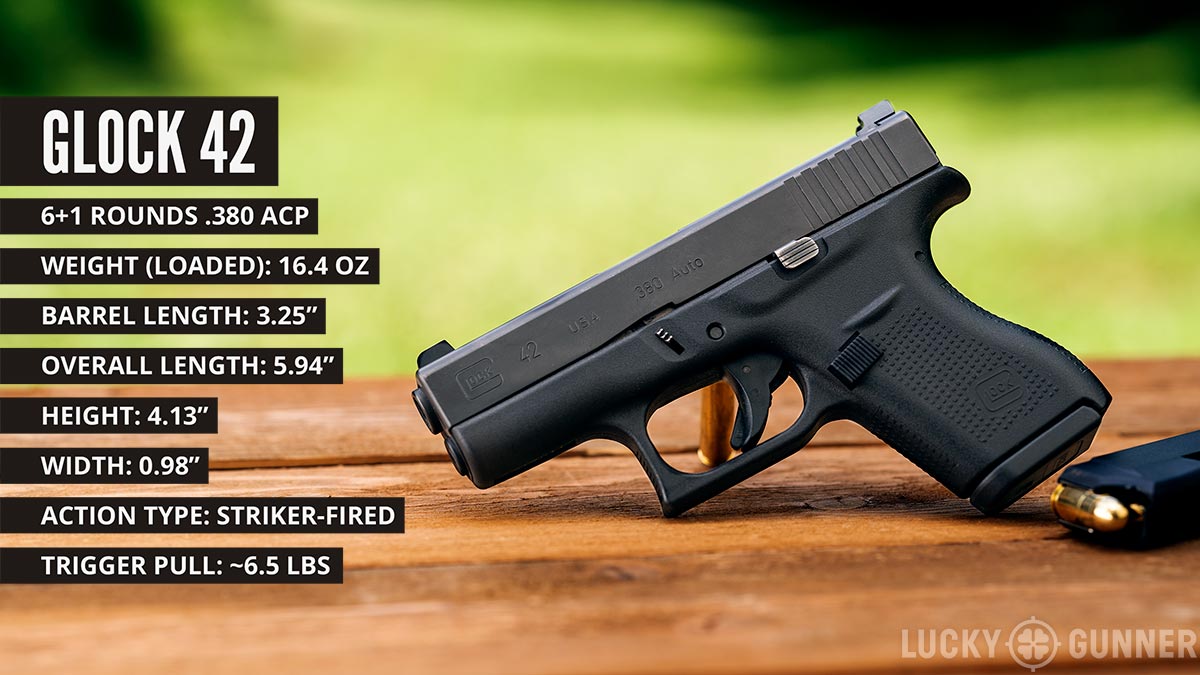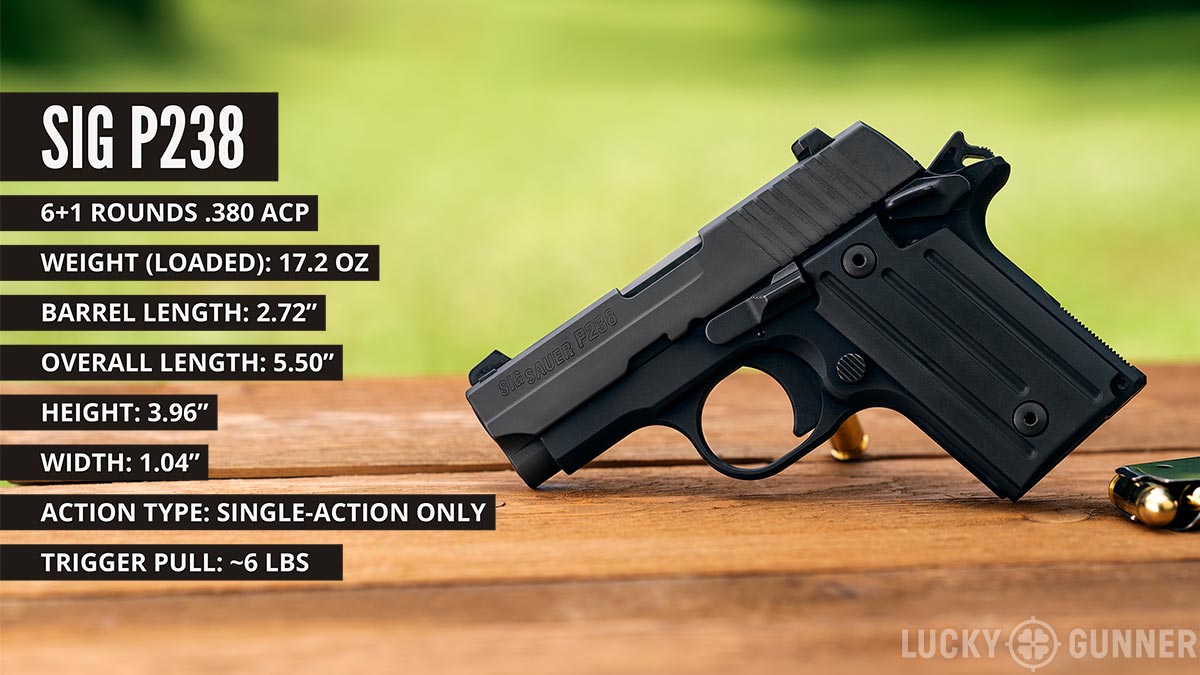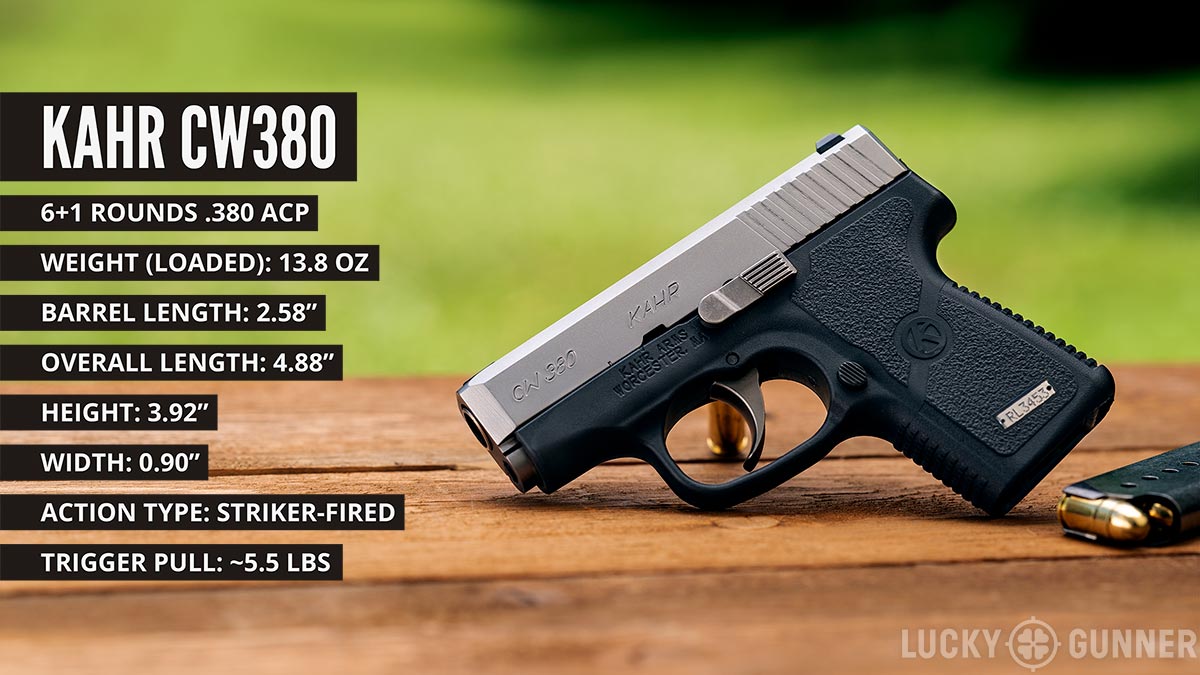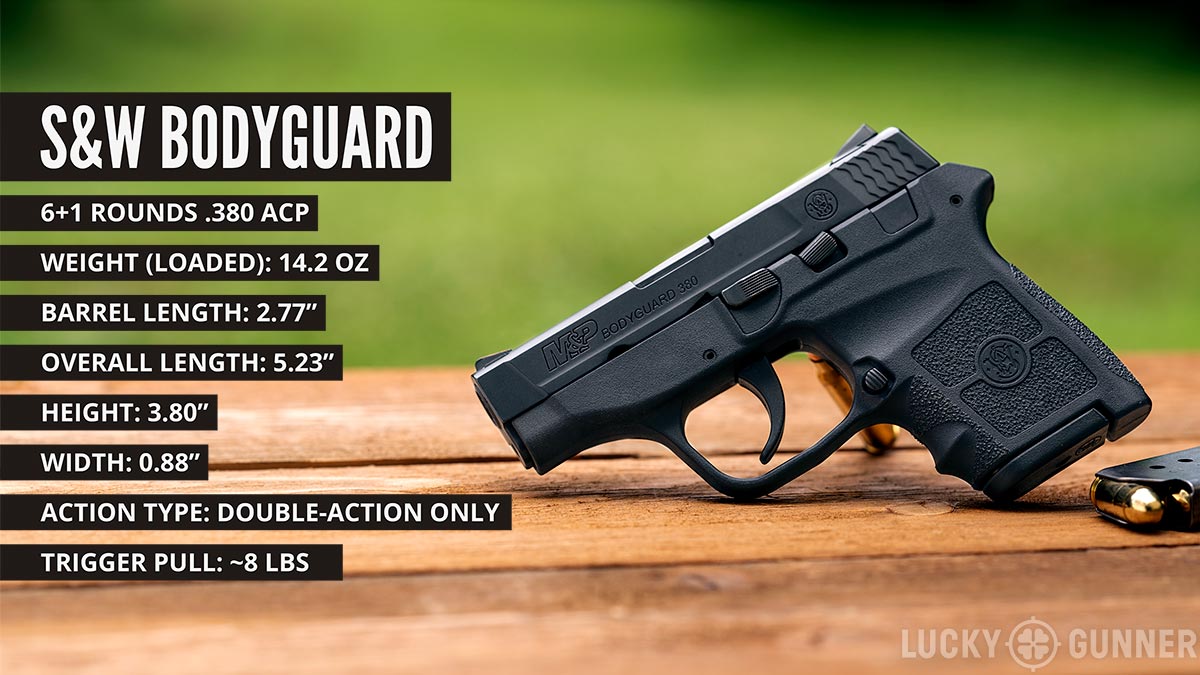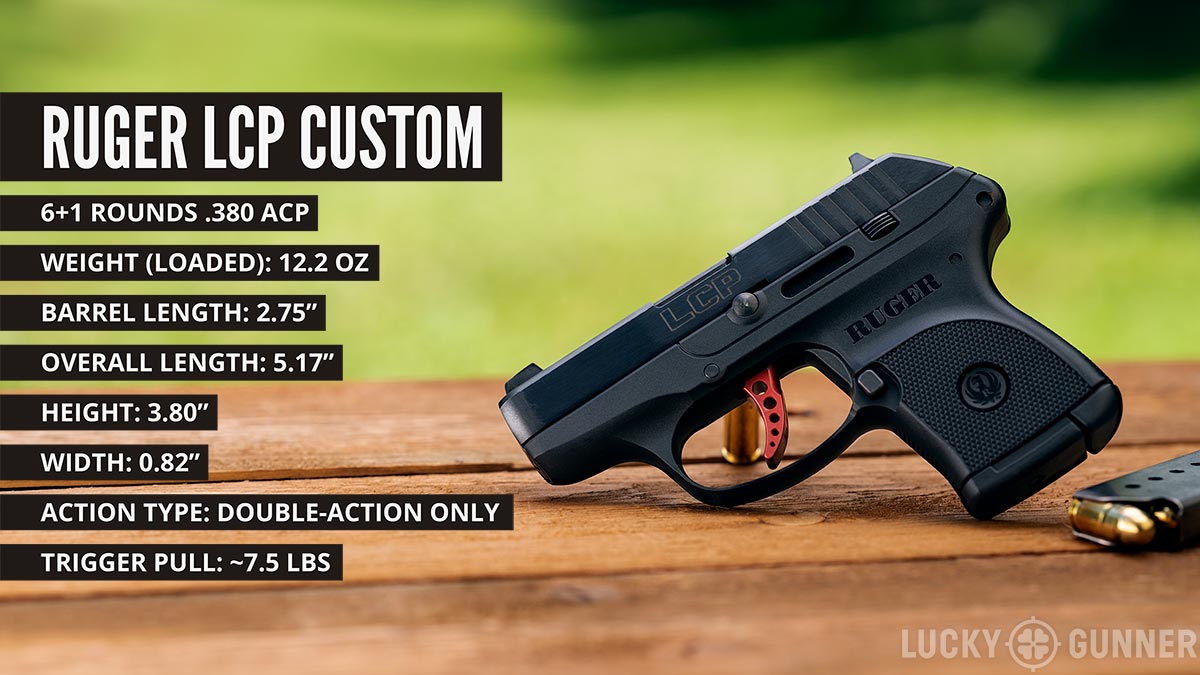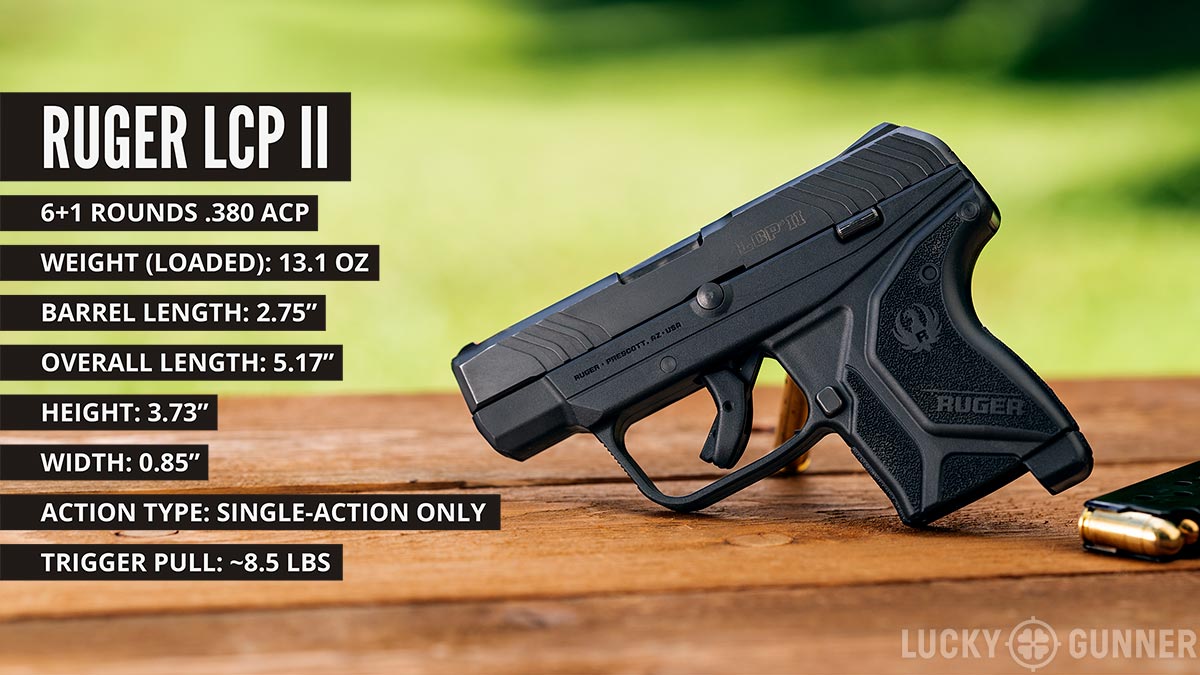To follow up our discussion about the merits of .380 ACP for concealed carry, in this installment of our Pocket Pistol Series, I’m comparing six popular micro .380 pistols. Details are in the video below, or scroll down to read the full transcript.
By my count, there are no fewer than 16 distinct models of .380 ACP pocket pistols being made right now. And that’s not including all of the different colors and configurations and other variants of each of those models. Almost every major handgun maker has at least one pocket .380 in their lineup. And the simple reason is that these guns sell. They are stupid-convenient to carry, they’re cheap, and within the last decade they have risen to become some of the most popular handguns for concealed carry.
Why Include These 380 Pistols?
Over the last couple of weeks, I’ve been spending a lot of time at the range with .380 pocket guns and today we’re going to take a look at how a few of these models compare to each other. I couldn’t devote time to every .380 on the market so this is limited to a selection of six from among the most popular models. If you’ve considered picking up a .380, even if it’s not one that I’ve covered, this should at least give you an idea of the different types of models that are available and what kind of features to look for.
I’m also limiting this review to truly pocket-sized micro pistols. The Glock 42 is the largest gun on the list and it’s kind of pushing the limits of this size category. So for today, I’m not considering larger guns like the Smith & Wesson Shield EZ or old, heavy classic designs like the Walther PPK/S. That doesn’t mean there’s necessarily anything wrong with those guns, they are just outside the scope of our focus on modern pocket pistols.
The models I’m looking at today are the Glock 42, the Sig Sauer P238, the Kahr CW380, the Smith & Wesson Bodyguard 380, and because nearly half of all .380s made in the US come from Ruger, we’ve got two of their micro pistols: the LCP Custom and the LCP II.
| .380 Pocket Pistol Specs | ||||||||
| pistol | capacity | weight (loaded) | barrel length | overall length | height | width | action type | trigger pull |
| Glock 42 | 6+1 | 16.4 oz | 3.25″ | 5.94″ | 4.13″ | 0.98″ | striker | ~6.5 lbs |
| Sig Sauer P238 | 6+1 | 17.2 oz | 2.72″ | 5.50″ | 3.96″ | 1.04″ | SAO | ~6 lbs |
| Kahr CW380 | 6+1 | 13.8 oz | 2.58″ | 4.88″ | 3.92″ | 0.90″ | striker | ~5.5 lbs |
| Smith & Wesson Bodyguard | 6+1 | 14.2 oz | 2.77″ | 5.23″ | 3.80″ | 0.88″ | DAO | ~8 lbs |
| Ruger LCP Custom | 6+1 | 12.2 oz | 2.75″ | 5.17″ | 3.80″ | 0.82″ | DAO | ~7.5 lbs |
| Ruger LCP II | 6+1 | 13.1 oz | 2.75″ | 5.17″ | 3.73″ | 0.85″ | SAO | ~8.5 lbs |
Before we get into the details here, I want to offer one major caveat about .380 pocket pistols in general: they all kinda suck. If I say that one of these is pretty good, understand that that’s only compared to other pocket pistols. I say this mainly because out of all the modern firearms we have to choose from, micro-sized semi-autos are the ones least likely to actually function when you need them the most. Semi-automatic pistols in general can be extremely reliable, but the smaller they get in size, the more likely they are to have malfunctions, especially in real-world fighting conditions.
If you have to fish the gun out of your pocket and end up with an awkward grip on it or you fire the gun while you’re jerking your arm back to keep someone from grabbing it — those are the kinds of things that tend to induce malfunctions. A lot of these pocket guns also seem to have mechanical problems — quality control issues tend to pop up a lot more often than they do with their full size and compact counterparts. So if you’re going to carry a pocket-sized .380, make sure you test fire it extensively, keep it clean and well-lubricated and get really familiar with malfunction clearance drills.
So, with that out of the way, let’s start with my favorite of the bunch…
Glock 42
Glock was a relative latecomer to the .380 scene. The 42 came out in 2014 and at first, a lot of people were skeptical because it is larger than most of the competition in a product category that is usually valued above all else for being very small. But that’s exactly why this gun is, in my opinion, the overall best .380 you can buy. It’s a pocket pistol that shoots like a full size. It’s not a bad gun to learn on for a novice shooter and if you’re already shooting at a more advanced level, the 42 is just effortless. It takes a lot less mental energy to run one of these well compared to either the smaller .380s or the micro 9mm pistols like the Glock 43.
For most people, the G42 going to be too big to actually carry in a pocket, but I think it pairs really great with a minimalist holster like this Raven Concealment Vanguard. You can carry it in your waistband but there’s a lot less bulk than a conventional belt holster. I reviewed this Glock 42 for our blog back in 2014 and since then, I’ve added a set of Trijicon HD night sights. With the low recoil and the big orange front sight, it’s like pocket pistol easy mode.
I’ve got a few thousand rounds through this gun and I’ve never had it malfunction in my hands, but I have seen it choke on several occasions when I’ve let inexperienced shooters try it. It seems to be really sensitive to anything less than a textbook grip. So the Glock 42 has a lot going for it, but it’s still susceptible to the same problems that are common to all of the pocket-sized pistol designs.
Sig P238
Sig Sauer rolled out the P238 in 2009 as a clone of the Colt Mustang which had been retired back in the 90s. It’s a 1911-style design with a single action only trigger and a manual safety. This one just has the safety on the left side, but Sig also offers ambidextrous versions. There are a few other 1911-style .380s on the market that are similar to this one. Colt brought the Mustang back a few years ago, and Kimber and Springfield Armory also have entries in this category.
The P238 is a little smaller than the Glock 42 but it’s also the heaviest gun on our list at 17.2 ounces loaded. Like the Glock, the P238 is also incredibly easy to shoot well, thanks to its low recoil, a short and light trigger, and the generously-sized night sights. The slide is easier to rack than most other small .380s which may be appealing to shooters with below average grip strength. But for several reasons, it’s not a gun I am quick to recommend for concealed carry.
For less experienced shooters, manual safeties in general are problematic just because of how frequently people tend to forget to use them. They either don’t have the safety engaged when they’re carrying the gun or they forget to disengage it when they want to shoot. Both of those mistakes could have deadly outcomes, so if you’re going to carry a gun with a safety, you need a lot of practice with it until it deactivating it when the sights go on target and reactivating it when they come off target just happens without any conscious thought. Beyond that, the P238 safety lever itself is not an ideal design. It’s mounted really far back and that makes it tough to positively control with the joint or pad of the thumb unless you break your firing grip.
Besides the safety, the P238 seems to have some serious reliability issues. But unlike the Glock 42, they are usually not user-induced problems. This particular P238 has been running pretty well for us but I owned one a few years ago that couldn’t make it through a full box of .380 ammo without two or three feeding failures. Having talked to other P238 owners and shooting instructors who have seen a lot of these guns come through their classes, reliability issues are common, even by pocket pistol standards. You might end up with one that works or you might not.
Kahr CW380
Kahr entered the .380 market in 2010 with the P380. Three years later, they followed it up with a more affordable entry-level version called the CW380 and that’s the one we tested. Functionally, they are basically the same gun except the CW380 comes with smaller sights and only one magazine.
Like all Kahr pistols, it’s a striker-fired design with a trigger that feels more like a light double action. It’s not the absolute smallest or lightest .380 on the market, but it’s not too far off. It is noticeably smaller than either the Sig or the Glock.
Out of the six guns I tested, this is the only one that really surprised me. At various times over the years, I have owned three different 9mm Kahr pistols and I never really warmed up to any of them and I didn’t shoot them very well. We’ve used a Kahr CW45 for some of our ballistic gelatin tests and it has to be one of the most miserable and unreliable guns I’ve ever shot. So I had low expectations for the CW380, but it has turned out to be an excellent shooter. For a gun its size, the recoil is unexpectedly mild. It’s not an effortless shooting experience like the Sig or the Glock, but it doesn’t have that snappy quality that you tend to get with the smaller pocket .380s. I kind of wish we had reviewed the P380 instead of the CW380, because the weakest aspect of this gun is the small sights. Fortunately, there are aftermarket options available if you want to upgrade those.
The recoil spring is relatively stiff. I think it’s the most difficult slide to rack of the guns in this review. Probably not a big deal for most people, but if that’s something you struggle with, a slide like that can be a deal-breaker. But assuming that’s not an issue, this would be my second choice for a small .380 behind the Glock 42.
Smith & Wesson Bodyguard 380
When Smith & Wesson released the original Bodyguard 380 in 2010, it had a heavy, gritty double action only trigger, a really tiny manual safety, and a button-activated integral laser sight of dubious quality. In 2014, the Bodyguard got a slight cosmetic facelift and they re-branded it as part of the M&P line of pistols. More importantly, they began offering a version without the integral laser or the manual safety and that has turned out to be a decent little pistol.
Compared to other small .380s, the Bodyguard’s grip is a bit larger lengthwise. If your hands feel cramped when you’re holding other pocket pistols, you might find it easier to get a solid firing grip on this gun. The trigger on the latest models is much improved over the early Bodyguards, even though it’s still somewhat long and heavy. I actually kind of like it because it feels more like a smooth J-frame trigger than any other pocket semi-auto, but I understand why a lot of people wouldn’t consider that to be a benefit.
The Bodyguard comes standard with a set of plain black sights of a respectable size. Like I’ve done with most of these other pistols, a little neon orange nail polish on the front sight goes a long way toward helping it stand out. At the range, I was able to shoot the Bodyguard fairly well. Actually, I could shoot it just slightly better than the Kahr, mostly thanks to the larger sights. However, that is in spite of the fairly significant recoil. I definitely had to put more mental effort into how I was gripping the gun in order to adequately control it.
That said, I like the Bodyguard because of how well it shoots for me, even if it’s not much fun, and I like the added safety of a hammer-fired double action only pistol. But I’m not too quick to recommend it. If you’re not already comfortable with managing a heavy trigger and snappy recoil, you’re probably not going to do well with this one.
Ruger LCP Custom
Ruger is the company most responsible for popularizing the modern pocket .380 with the 2008 introduction of their LCP, or Lightweight Compact Pistol. It’s not quite as light as the KelTec P3AT that inspired it, but it’s among the lightest 380s on the market with a loaded weight of just 12.2 ounces. Over the years, Ruger has offered dozens of variants of the LCP including this one. It’s an upgraded model originally released in 2015 called the LCP Custom. The standard LCP has stumpy little sights that are machined into the top of the slide. This version has dovetail cuts with larger sights installed. It also has this red skeletonized trigger which is wider than the standard trigger and makes the trigger pull feel lighter.
Despite the LCP Custom having earned a lot of enthusiastic fans, Ruger actually discontinued it couple of years ago. My guess is that they didn’t want it cannibalizing sales from the newer LCP II, which is probably a little cheaper to make. Ruger’s current catalog does include an LCP with a silver version of the wide skeletonized trigger with the standard LCP sights.
I do think the Custom is a nice upgrade over the original LCP, but not enough to make me a fan. The recoil is similar to what I experienced with the Bodyguard, except that, like a lot of people, I tend to get trigger bite with the LCP. That’s where recoil causes the trigger finger to get pinched in between the bottom of the trigger and the trigger guard and it makes shooting the gun pretty unpleasant.
Even though the sights are much easier to see than the standard LCP, the sharp angles on this rear sight make it unnecessarily prone to snagging on clothing. And like the Sig P238, the LCP is another model that seems to have hit or miss reliability. So with or without these upgrades, I really cannot recommend the Ruger LCP.
Ruger LCP II
In order to address some of those issues with the LCP, in 2016, Ruger announced the LCP II. They made several changes to this new model like a wider grip that helps cut down on felt recoil, improved sights, and a magazine that locks the slide open when the gun is empty. The most significant change is to the trigger and the action itself.
Neither pistol fits neatly into the traditional definitions of action types, but the original LCP most closely resembles a double action only design while the LCP II is most like a single action only. On the original LCP, the slide cocks the hammer about halfway, and the trigger takes the hammer back the rest of the way and drops it. With the LCP II, the slide cocks the hammer almost completely and pressing the trigger does just the very last portion.
For the shooter, what this means is that the original LCP has a long and somewhat heavy trigger and the LCP II trigger has a lot of initial takeup with almost no resistance, and then a hard wall of resistance with a short travel to complete the trigger press. It’s similar to the feel of some striker-fired pistols.
The new trigger seems to have been fairly well-received but personally, I can’t stand it. The weight of this trigger is about 8.5 pounds. That’s heavier than either the original LCP or the Bodyguard. But unlike those guns, as I pull this trigger, I’m not getting any tactile feedback — I don’t know how close the trigger is to breaking. I’m just pressing against this heavy wall waiting for it to go bang. So I shoot this gun significantly worse than any of the other .380s. I can shoot it quickly or accurately, but not both at the same time.
To their credit, I do think Ruger did a nice job with these sights. They’re an okay size and they have a low-profile snag-free shape. That said, if you want the smallest possible .380 with a manageable trigger, I would recommend the Kahr instead.
The next time we return to our pocket pistol series, I’ll be devoting some time to snub nose revolvers. So be on the lookout for that and also be sure to order some ammo from us with lighting fast shipping at LuckyGunner.com
